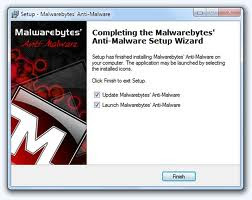It's no longer enough for antivirus software to scan files on your PC. You need someone looking over your shoulder and telling you whether it's safe to click that link; whether the popup for that software update is legitimate; and whether that download from your favorite social network is actually a tool created by organized criminals for stealing your personal information. You need an all-in-one Internet security suite capable of identifying, blocking, and cleaning up after a wide array of malware.
We examined 13 security suites for this story. To handle our expanded Internet security testing, PCWorld contracted for the services of AV-Test.org, a respected security testing company. We looked at traditional signature-based detection (which indicates how well products can block known malware) and at how well the suites cleaned infections and blocked brand-new, live malware attacks.
In many respects, the suites we looked at produced closely bunched results, but they did vary in the efficacy of their protection and in the extra features they offered. Ultimately, we picked Symantec's Norton Internet Security 2011--the most balanced of the suites--as our overall winner.
New Threats for a New Year
Malware has migrated to social networks, so this year's Internet security suites put more emphasis on stopping Web-based attacks. Norton Internet Security 2011, for example, has Norton Safe Web, a feature that hooks into your Facebook stream (with your permission) to scan your Facebook links and proactively block malicious ones. Other suites this year look for techniques that cyber-criminals use in attempts to poison SEO (search engine optimization), loading up on popular search keywords to make malware-compromised sites appear higher in search results. A suite may flag any such sites in search results as unsafe or questionable.
Another threat is the resurgence of banking-related malware. Though some suites protect against certain types of banking-specific malware--Kaspersky Internet Security 2011 offers a virtual, on-screen keyboard that lets you bypass traditional keyloggers, and in our tests, Panda, followed by G-Data, offered the best detection rates for known banking-specific malware-- no suite targets the relatively new "man-in-the-browser" attacks, in which the malware doesn't activate until you have successfully logged into your bank account.
Practically all suites offer some method to prevent malware from downloading through your browser without your consent. For example, a Website might pop up a fraudulent warning that your PC is infected and that you must buy a particular (but fake) antivirus program to remove it. Or it might trick you into downloading Trojan horses disguised as the latest version of Adobe Reader or Flash. Most security suites now monitor browser downloads and filter out this bogus software.
How to remove HDD Diagnostic Malware/Virus?
0
comments
Friday, December 10, 2010
 HDD Diagnostic is a rogue (malware, virus) parading as a system optimizer software that, once installed, tries to convince users there is something wrong with their system by displaying various fake error messages.
HDD Diagnostic is a rogue (malware, virus) parading as a system optimizer software that, once installed, tries to convince users there is something wrong with their system by displaying various fake error messages.HDD Diagnostic is installed via Trojans or the TDSS Rootkit. Don’t worry, this removal guide will also show you how to get rid of the TDSS Rootkit.
Once installed, HDD Diagnostic will start every time you log into Windows and it will display error messages when the user tries to launch any program or delete files. It will then ask you to analyze your system with the program and, if you do that, it will display numerous warnings and errors that can only be fixed if…surprise, surprise…you buy the full version of HDD Diagnostic. Of course this is a scam so don’t be tricked into giving your credit card info.
HDD Diagnostic Removal Guide
If HDD Diagnostic prevents you from downloading files, you need to get them on an uninfected system and transfer them via USB, CD/DVD etc.
1. Launch iExplore.exe in order to stop all the processes associated with HDD Diagnostic. It might take a while but you’ll know that iExplore has finished when the black window disappears.
Note: You might receive some messages saying that iExplore.exe is a virus. Don’t worry, this is just HDD Diagnostic’s way of defending itself. If such a message appears leave it on the screen and run iExplore.exe again. If you’re still having problems download RKill.com and/or eXplorer.exe from the provided link and try again ( they are just renamed copies of iExplore.exe )
2. Execute the downloaded MBAM ( Malwarebytes’ Anti-Malware ) setup file and complete the installation following the on-screen instructions ( just make sure that both “Update Malwarebytes’ Anti-Malware” and “Launch Malwarebytes’ Anti-Malware” boxes are checked ).
Attention ! Don’t reboot your system even if MBAM prompts you to as you’ll have to start over.
3. Once the installation finishes MBAM will automatically start. Select Scanner, then Perform full scan and click Scan. The scanning process might take a while.
4. When the scan finishes click on Show Results, make sure every box is selected and then hit the Remove Selected button. Good Job!
You can now restart your system as HDD Diagnostic should be removed by now.
Subscribe to:
Comments (Atom)





